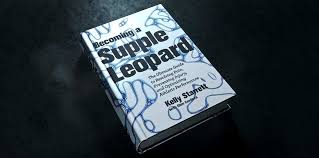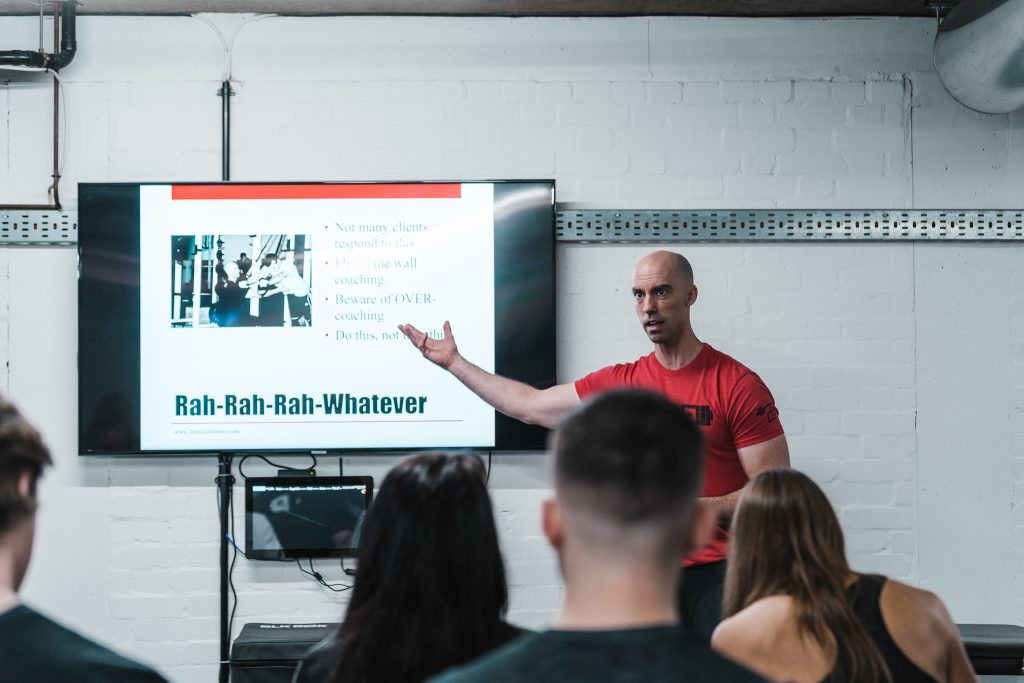In case you’ve been living in a cave for the past few months or engrossed in the latest season of The Walking Dead, you’ve undoubtedly noticed a hot debate in the fitness and weight-training community surrounding the whole “knees out” technique when performing the squat (or deadlift for that matter).
As far as debates in this industry are concerned, it’s a doozy. I’d put it right up there with other debates which make people go bat-shit crazy with rage such as steady state cardio vs. HIIT, eating every 2-3 hours vs. intermittent fasting, ShakeWeight vs. ThighMaster, or which is the superior late 90s-end-of-the-world-asteroid-slams-into-Earth-disaster-flick: Deep Impact or Armageddon?
The impetus behind the madness is one Dr. Kelly Starrett, owner of CrossFit San Francisco and author of the New York Times best selling book Becoming a Supple Leopard, who, at least recently, is the prime example of someone who’s championed the “knees out” cue.
Just to be clear though: he’s not the first (nor will be the last) to use this cue, but writing a national bestseller will pretty much guarantee your name is placed in the spotlight, and open the floodgates to the critics.

Addressing the pink elephant standing in the middle of the room, let me preface all of this by saying that I don’t work with elite level olympic lifters – in fact, I rarely work with anyone who does olympic lifting outside of the occasional college athlete or meathead who wants to learn how to perform a hang clean.
But in a non-explosive reverse bicep curl kind of way.
However the book (and the cue) speaks to more than JUST elite level olympic lifters – and I believe the book was intended for a much broader audience, and was written as such.
Sure there’s sections dedicated towards the Olympic lifts – and CrossFit (for better or worse, mostly worse, but that’s another ball of wax I don’t want to get into right now) – encompasses a large olympic lifting component. But the book as a whole and Kelly’s message throughout is to help people move better and to avoid technique faults or errors – with the squat (and by extension, the deadlift) taking the forefront.
Still, due to the whole phenomena, you’d be hard pressed to find more spit-fire and venom directed towards Kelly within various articles, blogs, and forums. It’s like playing the Six Degrees of Kevin Bacon game, except here the premise is to see how many time you can click your mouse or notebook pad before you come across someone on the internet shitting a kettlebell because Kelly has the audacity to cue people to squat with their knees out.
What an asshole!
And that’s the thing – he doesn’t even subscribe to that “cue” in the first place! At least not in the literal sense. He’ll be the first to tell you that squatting with an excessive knees out pattern (or excessive varus, bowing) is a fault and that he would NOT want an athlete or client to do that. In fact, he uses it as a CUE for when an athlete begins to go into knee valgus when squatting.
But more on that in a second.
Before I continue: lets take ad hominem jabs out of the picture. I love how a lot (not all) of the arguments against Kelly is that he calls himself a “Dr” (he has a doctorate in Physical Therapy), that just because he treated “x” athlete one time doesn’t mean he trains said athlete, and that CrossFit San Francisco has yet to churn out an elite level CrossFit athlete.
For starters the book is titled Becoming a Supple Leopard: The Ultimate Guide to Resolving Pain, Preventing Injury, and Optimizing Athletic Performance.
It’s NOT called The End-All-Be-All Guide to Winning the CrossFit Games: Go Fuck Yourself, Everybody.
Secondly, the man has run his own successful gym (for nine years) and clinic (for six) and he and his staff have logged over 100,000 athlete sessions during that time.
100,000!!!!
I’m sorry but as someone who’s been coaching for a while and who co-founded one of the more reputable strength training facilities in the country, that number HAS to be respected.
That is a crap ton of sessions.
So lets just take a chill pill and respect the fact that Kelly probably knows a thing or two about training people, Mmmmkay.
So Back to This While Cueing Thing
As Kelly notes in THIS video series he posted on his MobilityWOD.com website were he defends his stance and tries to clear up any miscalculation on his message regarding the “knees out” debate:
“A cue is a relationship between a coach and an athlete specific to that moment for something that’s going on. Ie: trying to solve a specific problem.”
What other cue (key word: CUE!!!!) is supposed to be used to prevent the knees from collapsing in?
“Hey, hey, hey, HEY!! Stop doing that thing you’re doing!!!!”
Or, as Kelly and his staff jokingly state:
“Knees not in.”
They coach people to squat with flat feet, cueing an external rotation torque (rotating femurs?) to create more stability in the hips and lower back. During the descent and ascent out of the hole, the knees should track in the same path.
Starrett even notes, “if you push out too far and your knees bow out into excessive varus, and your foot comes off the floor, that’s an error.”
How this has somehow been lost in translation is beyond me. I don’t know of ANY strength coach – and I know a lot of very smart strength coaches – who would disagree with this assertion.
Knees collapsing into valgus when squatting is unacceptable, and I don’t know of ANY coach who doesn’t use the knees out CUE.
For 99.99% of people out there who aren’t elite level OLY lifters this is a bang on cue and helps to significantly improve technique.
[I recognize that many elite level OLY lifters will go into excessive valgus on the catch to explode out of the hole. Okay, cool. They’re ELITE. They’ve perfected technique to the point where if they do get into a compromising position, when the shit hits the fan, they’re less likely to injure themselves. This doesn’t mean Dave from accounting, on his first day of training, should be held to the same standard.]
Which then begs the question: what if someone can’t squat well? To perform a “deep” squat you need adequate hip internal rotation. If you don’t have it, the default isn’t quite so much knees caving in (that much), but more so someone leaning forward too much. Either way it’s a faulty pattern.
Likewise for those who lack ample ankle dorsiflexion, the typical default pattern will end up being a collapsed arch in the foot with subsequent knee valgus.
And all of this doesn’t take into consideration one’s hip or bony structure. As Dean Somerset has touched on recently: genetics do come into play. Depending on one’s body (hip) structure, this may dictate how well they’re able to handle heavy loads and/or even which squat or deadlift variation is most suitable for them.
As well, you have to take into consideration one’s current (and past) injury history, soft tissue restrictions, posture, experience, and ability level.
In short: everything’s a little more complicated than nitpicking over semantics, and toy actually should assess your athletes and clients. And I have to assume that Kelly along with his staff would agree with this.
But I can’t think of one coach who would advocate nor tolerate someone squatting with the knees caving in. By that token, the cue “knees out” is the universal go to. All that’s being asked is to create peak torsion to create the system for stability in the hip and back. No one is asking for someone to stand there, perform a squat, and then push the knees out so far that they’re hanging on the end of their joint capsule.
I could be wrong, but I have yet to interpret anything Kelly has said or written to think otherwise. I don’t doubt that there are some coaches or CrossFit affiliates out there who may be coaching their squats in this fashion, and if so, they’re wrong. Direct your hate towards them.
Or, you could actually go coach someone before you start throwing darts. Just sayin…..



 2005) follows you south and you watch the Ravens bring the trophy to Charm City … which I credit my son for doing, since only days before a Wild Card game with Indianapolis he got his first sports jersey J]
2005) follows you south and you watch the Ravens bring the trophy to Charm City … which I credit my son for doing, since only days before a Wild Card game with Indianapolis he got his first sports jersey J]

